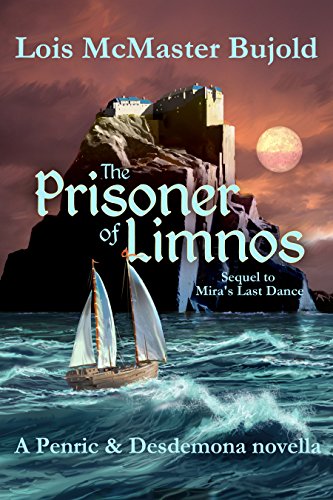 The Prisoner of Limnos (Penric & Desdemona #6) Formats available: ebook, audiobook
The Prisoner of Limnos (Penric & Desdemona #6) Formats available: ebook, audiobook Series: Penric and Desdemona #6
Pages: 139
on October 26th 2017
Purchasing Info: Author's Website, Publisher's Website, Amazon, Barnes & Noble, Kobo
Goodreads
In this sequel novella to “Mira’s Last Dance”, Temple sorcerer Penric and the widow Nikys have reached safety in the duchy of Orbas when a secret letter from a friend brings frightening news: Nikys’s mother has been taken hostage by her brother’s enemies at the Cedonian imperial court, and confined in a precarious island sanctuary.
Their own romance still unresolved, Nikys, Penric, and of course Desdemona must infiltrate the hostile country once more, finding along the way that family relationships can be as unexpectedly challenging as any rescue scheme.
My Review:
There’s a famous cartoon by Sidney Harris of two mathematicians standing at a blackboard. On the blackboard, there’s a complicated formula on the left and more complicated formula on the right. In the middle, there’s the text, “THEN A MIRACLE OCCURS”. The caption is one mathematician telling the other, “I think you should be more explicit here in step two.”
The plan that Penric hatches with Nikys to rescue her mother from political imprisonment is a lot like that cartoon, to the point where the need for the miracle in the middle is called out more than once.
Considering that the place where her mother is being held is a sanctuary devoted to worship of the Daughter, and that Penric is a Learned Divine and a Sorcerer in the service of the fifth god, Lord Bastard, a miracle is entirely possible – if not necessarily a good idea to actually count on.
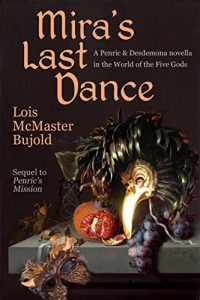 The Prisoner of Limnos picks up immediately after Mira’s Last Dance leaves off. It is necessary to read the Penric and Desdemona series in at least the publication order, but as this is a series of novellas, and they are all excellent, if you like fantasy, particularly of the slightly epic and continually quirky variety, the series is a marvelous and relatively quick read.
The Prisoner of Limnos picks up immediately after Mira’s Last Dance leaves off. It is necessary to read the Penric and Desdemona series in at least the publication order, but as this is a series of novellas, and they are all excellent, if you like fantasy, particularly of the slightly epic and continually quirky variety, the series is a marvelous and relatively quick read.
But as this one picks up right after the last book, the issues left unresolved at the end of Mira’s Last Dance are still very much unresolved. That issue being Penric’s courtship of Nikys. It’s not that they don’t love each other, because they do, or at least are getting there. The problem is Penric’s demon, Desdemona, and all of the 14 personalities that reside within her, and therefore him.
Nikys is more than happy to be with Penric, but completely unsure about the horde of females who all live in his head. He’s not crazy. Being the rider for a demon is a condition of becoming a sorcerer. (How Penric and Desdemona ‘met’ is in the first book, Penric’s Demon)
But when Nikys discovers that her mother has been imprisoned as a way to bring her brother back to their former home, a country that wrongly accused him of treason and blinded him in punishment, she turns to Penric. Both because she trusts him implicitly, and because she knows he’s the only one who might be capable of pulling this jailbreak off.
After all, he got her and her brother out of the country once, in not dissimilar circumstances. He should be able to do it again.
With a little bit of help from their friends. And a whole lot of help from the gods.
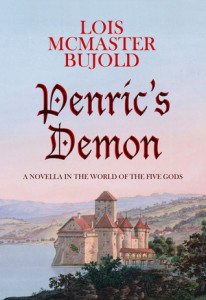 Escape Rating A-: This is a rescue where everything goes right, everything goes wrong, and a seagull goes ‘poof’.
Escape Rating A-: This is a rescue where everything goes right, everything goes wrong, and a seagull goes ‘poof’.
Penric is always flying by the seat of his pants, even when he’s not wearing pants. His god, the Lord Bastard, is the ‘master of all disasters out of season’. In other words, Penric serves an agent of chaos. When you semi-control, and it’s only ever semi, the chaos, you can often visit it upon your enemies instead of yourself. Not that Penric doesn’t pay for the use of his magic in other ways.
This is a story about politics and romance, wrapped around a sometimes daring and often hilarious rescue. Penric never does anything by halves.
The strength of the series is the relationship between Penric and Desdemona. They are bound together in something closer than kinship, and it’s a lifebond. At least for him. When he dies, Desdemona and everything she has learned from him and all her previous riders will be passed to the next sorcerer, or to the nearest person handy who automatically becomes a sorcerer.
Penric is a fascinating character all by himself. He’s someone who has broken completely away from everything he originally intended to be, and has made himself an interesting and useful life as he is. At the same time, he is very independent of mind and always has a slightly quirky outlook on what he sees.
That the author has managed to make Desdemona a separate character, even though she part of Penric, makes this all work. Desdemona is the ultimate big sister, with a snarky outlook built over centuries of living and multiple riders. At the same time, all of her riders have been female, and she is finding the whole ‘love and courtship’ thing every bit as idiotic from the male perspective as she ever did from the female. And she laughs.
While the rescue is screamingly fun, the heart of the story is Nikys’ resolution of her dilemma about Penric and all his “sisters”. She has to decide if loving the man is worth putting up with all of his baggage, even more than occurs in most marriages. And the way its done is both completely sensible and absolutely lovely.
My only complaint about The Prisoner of Limnos is the same one I have about every novella in this series. It’s a novella, meaning it’s too damn short. I love returning to this world, and I always want MORE!

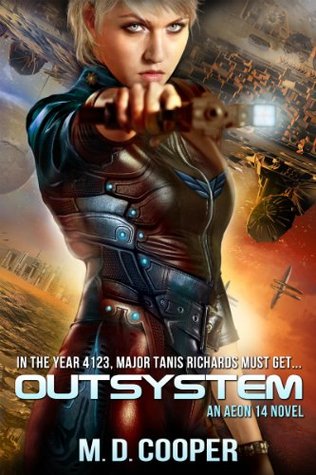 Outsystem (The Intrepid Saga #1) by
Outsystem (The Intrepid Saga #1) by 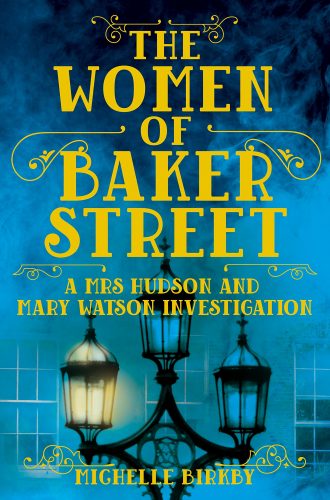 The Women of Baker Street (A Mrs Hudson and Mary Watson Investigation, #2) by
The Women of Baker Street (A Mrs Hudson and Mary Watson Investigation, #2) by  I read
I read  Penric's Fox Formats available: ebook
Penric's Fox Formats available: ebook 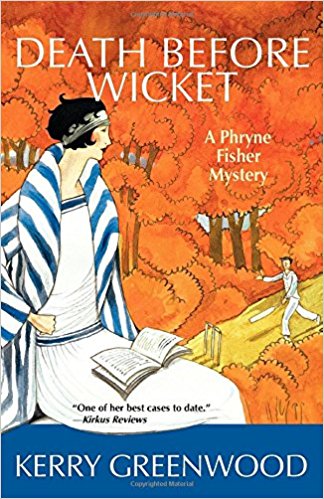 Death Before Wicket (Phryne Fisher Mystery #10) by
Death Before Wicket (Phryne Fisher Mystery #10) by  Most of the books in the Phryne Fisher book series were used as inspiration for episodes of the
Most of the books in the Phryne Fisher book series were used as inspiration for episodes of the  Escape Rating B-: There are lots of reviewers who will say that this is one of Phryne’s adventures that can be given a miss, unless one is either a real fan or a terrible completist. As I’m certainly the latter, and possibly the former, I picked this one up in its proper order. I’m not sorry in the least, but I found the academic setting of the mystery to be perhaps unintentionally hilarious. Academia in the 21st century is not quite as it was in the 1920s, but some of underlying insanity isn’t all that different either. Enough similar that I found enough bits reminiscent to carry me through. If you are looking to start Phryne’s series, do not, on any account, start here. Start with
Escape Rating B-: There are lots of reviewers who will say that this is one of Phryne’s adventures that can be given a miss, unless one is either a real fan or a terrible completist. As I’m certainly the latter, and possibly the former, I picked this one up in its proper order. I’m not sorry in the least, but I found the academic setting of the mystery to be perhaps unintentionally hilarious. Academia in the 21st century is not quite as it was in the 1920s, but some of underlying insanity isn’t all that different either. Enough similar that I found enough bits reminiscent to carry me through. If you are looking to start Phryne’s series, do not, on any account, start here. Start with  I’m looking forward to going
I’m looking forward to going 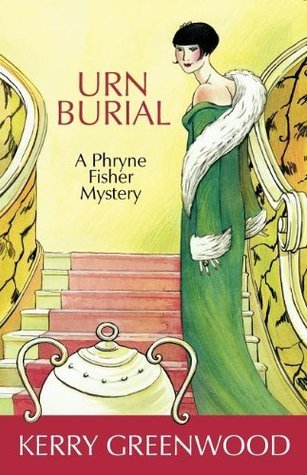 Urn Burial (Phryne Fisher, #8) by
Urn Burial (Phryne Fisher, #8) by  Urn Burial is the 8th book in the
Urn Burial is the 8th book in the  Tender Wings of Desire Format:
Tender Wings of Desire Format:  The Librarians and The Lost Lamp (The Librarians #1) by
The Librarians and The Lost Lamp (The Librarians #1) by  The Librarians
The Librarians I had a lot of fun reading this, enough so that I’m looking forward to the author’s next contribution to the series, in
I had a lot of fun reading this, enough so that I’m looking forward to the author’s next contribution to the series, in 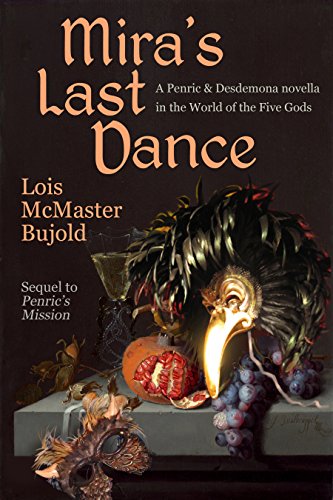 Mira's Last Dance (Penric and Desdemona #6) Formats available: ebook
Mira's Last Dance (Penric and Desdemona #6) Formats available: ebook 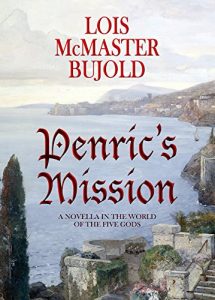 Escape Rating A-: My one complaint about this series is that each of the stories is just too short. I’m always left wanting more, and knowing it will be months before I get any.
Escape Rating A-: My one complaint about this series is that each of the stories is just too short. I’m always left wanting more, and knowing it will be months before I get any.



 The Collapsing Empire Formats available: hardcover, paperback, ebook, audiobook
The Collapsing Empire Formats available: hardcover, paperback, ebook, audiobook